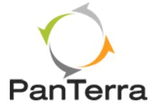Description

PanTerra

Xarios
Comprehensive Overview: PanTerra vs Xarios
PanTerra
a) Primary Functions and Target Markets
- Primary Functions: PanTerra offers a unified communications as a service (UCaaS) platform that includes voice, video, messaging, file sharing, collaboration, and contact center functionalities. The platform is designed to streamline communication through a cloud-based environment, integrating various types of business communication into a single platform.
- Target Markets: PanTerra primarily targets medium to large enterprises that require comprehensive communication solutions. Industries such as healthcare, finance, technology, and legal services often benefit from its offerings due to the need for secure, reliable, and scalable communication systems.
b) Market Share and User Base
PanTerra has a solid presence in the UCaaS market, but it competes with larger players like Zoom, Microsoft Teams, and RingCentral, which command more significant market shares. As such, its user base is smaller but focuses on niche market segments that require specialized communication needs.
c) Key Differentiating Factors
- Integration Capabilities: PanTerra offers robust integration options with existing business applications, making it appealing for enterprises that need seamless workflow integration.
- Security and Compliance: Provides strong security features and compliance support, important for sectors like healthcare and finance.
- All-in-One Solution: Unlike some competitors, PanTerra offers a truly unified platform rather than separate tools pieced together.
Xarios
a) Primary Functions and Target Markets
- Primary Functions: Xarios Technologies specializes in telephony applications that enhance call handling, reporting, and integration with CRM systems. Their solutions are particularly focused on improving the functionalities of existing phone systems.
- Target Markets: Xarios targets small to medium-sized businesses (SMBs) that require advanced telephony capabilities to enhance customer interaction without a complete overhaul of current systems.
b) Market Share and User Base
Xarios has a niche market share, particularly prominent in the telecommunications sector among businesses using traditional PBX systems looking to advance their functionalities without transitioning fully to cloud-based solutions.
c) Key Differentiating Factors
- PBX Integration: Xarios provides powerful tools that work with on-premises PBX systems, appealing to businesses not ready to transition to fully cloud-based solutions.
- Advanced Reporting: Offers detailed reporting and analytics tools that are beneficial for businesses keen on performance tracking and metrics.
- CRM Synchronization: Strong emphasis on CRM integration to enhance customer relationship management.
XenCALL
a) Primary Functions and Target Markets
- Primary Functions: XenCALL offers call center software that empowers sales and support teams with features like predictive dialing, lead management, CRM integration, and analytics.
- Target Markets: XenCALL serves call centers across various industries, focusing on organizations needing robust outbound calling capabilities and enhanced lead conversion tools.
b) Market Share and User Base
In the call center software niche, XenCALL is competitive but smaller compared to larger entities like Five9 and Genesys. It caters primarily to SMBs and growing enterprises looking for affordable yet functional solutions.
c) Key Differentiating Factors
- Predictive Dialer: A powerful predictive dialer that maximizes agent efficiency, an essential feature for sales-driven call centers.
- Economical Pricing: Known for offering competitive pricing, making it accessible for smaller businesses compared to larger, more costly platforms.
- Customization and Flexibility: Provides extensive customization options, allowing businesses to tailor the platform to specific needs.
Comparison Summary
-
Market Share and User Base: PanTerra has a stronger presence in the UCaaS market but faces stiff competition from industry giants. Xarios and XenCALL cater to more specific niches within telecommunications and call center solutions, respectively, and have smaller but focused user bases.
-
Differentiation: PanTerra’s unified platform, security emphasis, and enterprise focus stand out. Xarios is distinguished by its PBX integration capabilities and advanced telephony enhancements. XenCALL offers cost-effective, customizable call center solutions with strong predictive dialing features.
These differences cater to varying business needs ranging from comprehensive communication systems to specialized telephony and call center functionalities. Each product serves its target market with features designed to address industry-specific challenges.
Contact Info

Year founded :
2016
Not Available
Not Available
Denmark
Not Available

Year founded :
Not Available
Not Available
Not Available
Not Available
Not Available
Feature Similarity Breakdown: PanTerra, Xarios
When evaluating cloud-based communication and contact center solutions like PanTerra, Xarios, and XenCALL, it's important to understand their core feature offerings, user interface designs, and any unique elements that distinguish each product. Here's a breakdown:
a) Core Features in Common
-
Unified Communications:
- All three platforms offer unified communication capabilities, including voice, video, chat, and conferencing, designed to facilitate seamless interaction across multiple channels.
-
Contact Center Functionality:
- Comprehensive contact center solutions such as call routing, queue management, and IVR (Interactive Voice Response) systems are shared among these products.
-
CRM Integration:
- They offer integration with popular CRM platforms, which allows for enhanced customer management and the ability to track interactions and data in real-time.
-
Analytics and Reporting:
- Each provides analytics and reporting tools to monitor performance metrics, track call data, and gain insights into operations and customer interactions.
-
Scalability:
- These platforms are designed to scale with business needs, accommodating both small and large enterprises effectively.
-
Security Features:
- Essential security measures like data encryption, compliance with industry standards, and secure access protocols are common.
b) User Interface Comparison
-
PanTerra:
- PanTerra is known for its user-friendly interface which is designed with simplicity in mind, allowing users to access various communication and collaboration tools from a centralized dashboard.
-
Xarios:
- Xarios focuses heavily on providing a streamlined experience tailored for contact centers, with intuitive navigation and customizable dashboards to prioritize relevant information for agents and managers.
-
XenCALL:
- XenCALL has a robust interface with more emphasis on CRM functionality and productivity tools, aiming to combine telephony and customer management in a seamless manner. Its interface can be seen as slightly more complex due to the depth of integrated CRM features.
c) Unique Features
-
PanTerra:
- Streams Service: A standout feature is its 'Streams' service that combines UCaaS and CCaaS functionalities in a single solution, enhancing communication flexibility.
- File Sharing and Sync: It has advanced file sync and share capabilities that are integrated into its platform, promoting collaboration.
-
Xarios:
- Call Recording & Analytics: Advanced call recording and analytics capabilities that go beyond basic functionalities to offer deep insights into call quality and interaction specifics.
- Customizable Analytics Dashboard: Allows users to tailor their analytics view to better suit their operational needs and track specific KPIs.
-
XenCALL:
- Built-In CRM: Unlike many competitors, XenCALL includes a fully integrated CRM which eliminates the need for third-party systems for customer relationship management.
- Predictive Dialer: Features a robust predictive dialer to boost outbound calling efficiency, a crucial feature for high-volume sales operations.
In summary, while PanTerra, Xarios, and XenCALL have a similar core offering of communication and contact center solutions, each provides unique features and interface designs tailored to specific operational needs and business sizes. The choice between them would largely depend on the specific needs regarding CRM integration, interface preferences, and specific operational features like file sharing, call recording, and outbound dialing efficiency.
Features

File Sharing
Collaboration Tools
Unified Communications
Mobile Access

User-friendly Interfaces
Powerful Analytics
Seamless Integrations
Best Fit Use Cases: PanTerra, Xarios
When evaluating communication and contact center solutions like PanTerra, Xarios, and XenCALL, it's important to consider the specific needs and scenarios of individual businesses or projects. Each of these platforms has unique features and capabilities that make them best suited for particular use cases:
a) PanTerra
Best Fit:
- Types of Businesses or Projects: PanTerra is a versatile, cloud-based unified communication and collaboration platform that is an excellent choice for businesses looking for a comprehensive communication solution. It works well for medium to large-sized businesses that need an integrated suite of tools covering everything from voice communications to team collaboration.
- Key Features: It offers a range of features including VoIP, video conferencing, file sharing, and real-time analytics, which are particularly valuable for companies with distributed teams or a need for a seamless communication platform.
- Industries: It's well-suited for industries with a significant focus on remote work and collaboration, such as IT, professional services, and healthcare.
b) Xarios
Preferred Scenarios:
- Types of Businesses or Projects: Xarios is known for call management and contact center solutions, making it a preferred option for businesses that require advanced call logging, monitoring, and reporting capabilities. It is particularly beneficial for companies that prioritize customer service and seek to optimize their telephony operations.
- Key Features: Features like call analytics, wallboards, and integration with existing telephony systems make it ideal for improving customer interactions and operational efficiencies.
- Industries: Xarios is often chosen by businesses in sectors like financial services, retail, and traditional call centers, where tracking and optimizing call performance is crucial.
c) XenCALL
Consideration for Use:
- Types of Businesses or Projects: XenCALL is a robust CRM and contact center solution that is a strong choice for sales-driven organizations. It's especially ideal for businesses with outbound calling needs or telemarketing functions.
- Key Features: It offers predictive dialing, CRM integration, lead management, and various automation tools, which are excellent for growing sales teams and campaigns.
- Industries: Industries that benefit most include real estate, marketing agencies, and insurance companies, where lead generation and sales efficiency are critical components of business success.
d) Catering to Different Industry Verticals or Company Sizes
- PanTerra typically serves larger enterprises due to its wide range of features and scalability. Organizations with complex communication needs and multiple offices benefit from its unified approach.
- Xarios fits well with mid-sized companies and those in transitional phases looking to elevate their customer service operations without overhauling their current telephony infrastructure.
- XenCALL is a great fit for small to medium-sized businesses that need a solution focused on sales and customer acquisition. Its CRM capabilities and dialer functionalities are tailored for businesses prioritizing growth through enhanced customer engagement.
Each of these solutions has distinct strengths, and selecting the right one depends on the specific objectives, industry requirements, and existing infrastructure of the business seeking a communication or contact center solution.
Pricing

Pricing Not Available

Pricing Not Available
Metrics History
Metrics History
Comparing undefined across companies
Conclusion & Final Verdict: PanTerra vs Xarios
To determine the best overall value among PanTerra, Xarios, and XenCALL, it's important to consider various factors such as features, pricing, customer support, integration capabilities, scalability, and user feedback. Below is a consolidated analysis, conclusion, and verdict for each product:
PanTerra
Pros:
- Unified Platform: Offers a comprehensive suite of communication and collaboration tools including voice, video, messaging, and file sharing.
- Scalability: Suitable for businesses of all sizes with flexible scalability options.
- Security Features: Strong emphasis on security with robust compliance features.
- Customer Support: Reliable customer support with various channels available for assistance.
Cons:
- Complexity: The wide range of features might be overwhelming for small businesses that don't need extensive capabilities.
- Cost: Pricing can be higher compared to competitors, especially for small businesses.
Xarios
Pros:
- Specialization in Telephony: Strong focus on improving telephony capabilities with tools specifically for call management and analytics.
- Integration Capabilities: Easily integrates with popular CRM solutions and other business tools.
- User-Friendly Interface: Known for a straightforward and intuitive interface.
Cons:
- Limited Features Beyond Telephony: Mainly focused on telephony, which might not be sufficient for businesses looking for a broader range of communication tools.
- Scalability Limitations: Might not be ideal for very large organizations that require a more comprehensive communication platform.
XenCALL
Pros:
- Robust CRM Integration: Offers strong CRM and dialer integration which is ideal for sales and customer service operations.
- Automation Features: Provides powerful automation capabilities to streamline workflows.
- Cost-Effectiveness: Offers competitive pricing, making it a good option for small to medium-sized businesses.
Cons:
- Limited Non-Sales Features: Primarily geared towards sales-driven organizations; other businesses might find the feature set limited.
- Learning Curve: Some users report a steeper learning curve, especially for those unfamiliar with CRM software.
Conclusion and Final Verdict
Best Overall Value: If we consider a holistic approach that includes communication, collaboration, scalability, and security, PanTerra arguably offers the best overall value, particularly for medium to large enterprises that need a full-featured communication suite.
For businesses focused primarily on telephony, call management, and data analytics, Xarios would be a better fit due to its specialization and ease of integration with existing telephony systems.
For sales-driven organizations or those focusing on CRM integration for customer interaction, XenCALL would deliver high value due to its comprehensive CRM and dialer functionalities.
Recommendations:
-
Assess Needs: Users should start by assessing their specific business needs. If you require a strong all-in-one communication platform, opt for PanTerra. If your focus is mainly telephony and analytics, consider Xarios. For sales automation and CRM-centric needs, XenCALL is preferable.
-
Budget Consideration: Small businesses or startups with tighter budgets should evaluate the scalability and pricing structure carefully, potentially leaning towards XenCALL for best cost-effectiveness.
-
Trial and Demos: Take advantage of trial periods or demonstrations offered by each vendor. This will allow a hands-on assessment and help determine which interface and feature set feels most intuitive and beneficial.
-
Future Growth and Integration: Consider long-term growth and potential integration with existing systems, ensuring the chosen platform can support future business expansions and technological integrations.
By aligning these recommendations with business objectives, users can make informed decisions tailored to their unique requirements.
Add to compare
Add similar companies



